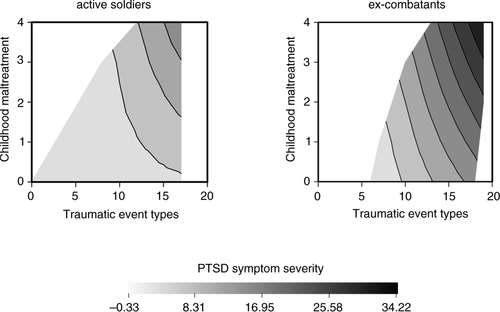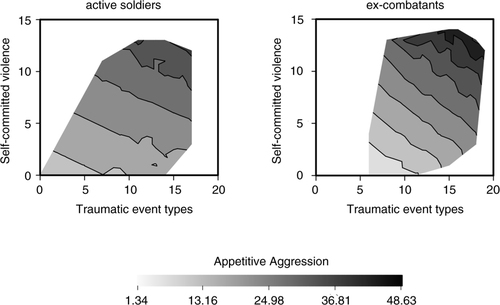Figures & data
Table 1 Descriptives of active soldiers and ex-combatants
Table 2 Robust multiple linear regression analysis predicting PTSD symptom severity (Model 1) and appetitive aggression (Model 2)
Fig. 1 Relationship between the number of traumatic event types, childhood maltreatment, and PTSD symptom severity. At any given level of exposure to traumatic events, PTSD symptoms increase alongside childhood maltreatment and vice versa—with increasingly different types of childhood maltreatment, PTSD symptoms increase alongside the experience of multiple traumatic stressors. PTSD symptom severity is more pronounced in ex-combatants at all levels of both predictors.

Fig. 2 Relationship between the number of traumatic event types, self-committed violence, and appetitive aggression. With increasingly different types of traumatic events, appetitive aggression increases alongside self-committed violence. The highest levels of appetitive aggression are found in ex-combatants; however, at the same level of predictors, appetitive aggression is more pronounced in active soldiers.

